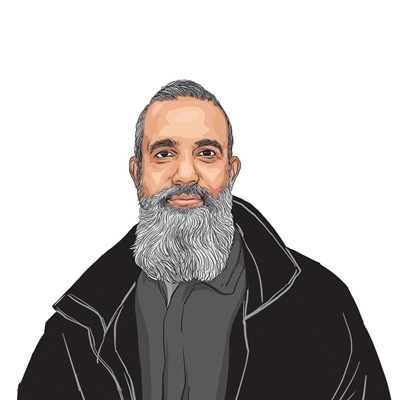How decades of agitation gave Ladakh UT status, before statehood demand surfaced
After the Partition, the region’s political trajectory was largely defined by the Ladakh Buddhist Association. Its precursor was the Young Men’s Buddhist Association, one of whose founding members was Pandit Sridhar Kaul, a Kashmiri Hindu from Srinagar.
 Environmentalist Sonam Wangchuk is leading the protest over statehood demand and inclusion of Ladakh under the Sixth Schedule.
Environmentalist Sonam Wangchuk is leading the protest over statehood demand and inclusion of Ladakh under the Sixth Schedule. In 1931, when Kashmir erupted against Dogra rule after the killing of 22 protesters outside the Srinagar Central Jail, the British Resident in Kashmir strongly advocated for a commission to probe Muslim grievances.
Under pressure, Maharaja Hari Singh set up the Glancy Commission, headed by British official B J Glancy. The panel recommended the creation of a Praja Sabha or People’s Assembly, consisting of 75 seats: 33 elected, 30 nominated, and 12 official members. Of the 33 elected seats, 10 were reserved for Hindus, two for Sikhs, and 21 for Muslims. Ladakh, then a district, was allotted only two nominated seats.
It was Pandit Sridhar Kaul, a Kashmiri Hindu from Rainawari in Srinagar who, while serving as an Education Officer in Leh, led the formation of the Young Men’s Buddhist Association (YMBA), which later became the Ladakh Buddhist Association (LBA).
Ladakh’s modern political history is deeply intertwined with the LBA, which, while presenting itself as a non-political, socio-religious organisation, has significantly shaped the region’s politics over the decades. Although its primary mission is to promote Buddhist interests, foster social reforms, and preserve Ladakh’s culture and identity, the LBA has consistently been at the forefront of political and social struggles in Buddhist-majority Leh.
For four centuries, Ladakh was ruled by the Namgyal dynasty before it was annexed into the princely state of Jammu and Kashmir under the Dogras. After the Partition, Ladakh’s political trajectory was largely defined by the LBA, which had long supported the idea of Union Territory (UT) status for Ladakh. However, the demand was scaled down to seeking an autonomous region, as the amendment of Article 370 was considered politically infeasible at the time.
In 1989, Thupstan Chhewang was elected the LBA’s president. Chhewang, who now heads the Apex Body, Leh (ABL), along with key figures such as Chering Dorjey Lakruk, Rigzin Spalbar, and Nuwan Rigzin Jora, advocated for a more assertive approach toward securing UT status for Ladakh.
Previous incidents of firing
The same year, a minor altercation between a Buddhist youth and four Muslims escalated into communal tensions, with the LBA calling for a boycott of Muslims in Leh. During this period, the LBA intensified its push for UT status. On August 27, 1989, the police opened fire on protesters near Leh’s historic polo ground, killing three men: Nawang Rinchen, Tsering Lobzang, and Tashi Angchuk. This was only the second instance of violence in Ladakh in many decades, the first being in 1981 when two Buddhists were killed during a protest demanding Scheduled Tribe status for Ladakhis.
Ladakh has historically been a region of contradictions — Leh, with its Buddhist majority, and Kargil, with its Muslim majority, have always had contrasting political aspirations. While Leh fought for UT status, Kargil wanted to remain aligned with J&K.
At the height of the LBA’s agitation, Kargil formed the Kargil Action Committee (KAC), led by religious head Ahmad Mohammadi. The KAC opposed the idea of a Union Territory and instead called for Ladakh to be granted divisional status within Jammu and Kashmir, similar to the Kashmir and Jammu divisions. The KAC’s efforts culminated in the election of Mohammad Hassan Commander, a Kargil Muslim, as Ladakh’s first Muslim MP.
Amid the continuing boycott of Muslims in Leh, the Central government intervened, initiating tripartite talks between the Centre, the J&K government, and the LBA. Although the talks saw multiple setbacks, especially after the fall of the Congress government and the rise of V P Singh and Chandra Shekhar governments, progress resumed with the return of Congress in 1991. By 1995, during the P V Narasimha Rao government, the Ladakh Autonomous Hill Development Council (LAHDC) Act was passed, paving the way for hill councils in Leh and Kargil. While Leh immediately embraced the Hill Council, Kargil deferred its decision until 2003, when the LAHDC Kargil was finally established.
For decades, Leh was a stronghold of Congress. However, as its struggle for Union Territory and Hill Council status was ignored by the Congress-led Centre and the J&K government, the LBA found support from the RSS and its ideological partners. In return, the RSS gained a foothold in Leh. Several LBA leaders, including Chhewang and Lakruk, joined the BJP, which got its first MP from Ladakh in the form of Chhewang in the 2014 Lok Sabha polls.
On August 5, 2019, the abrogation of J&K’s special Constitutional status and its division into two UTs, including Ladakh, was met with celebrations in Leh, with the LBA viewing it as the culmination of its long struggle.
However, six years later, Ladakh’s political landscape has shifted once again. Chhewang, Lakruk, and other former BJP allies have parted ways with the party and are now leading a renewed campaign for Ladakh’s statehood and inclusion under the Sixth Schedule of the Constitution. And for the first time, Leh and Kargil are on the same page, at least in their demands.




